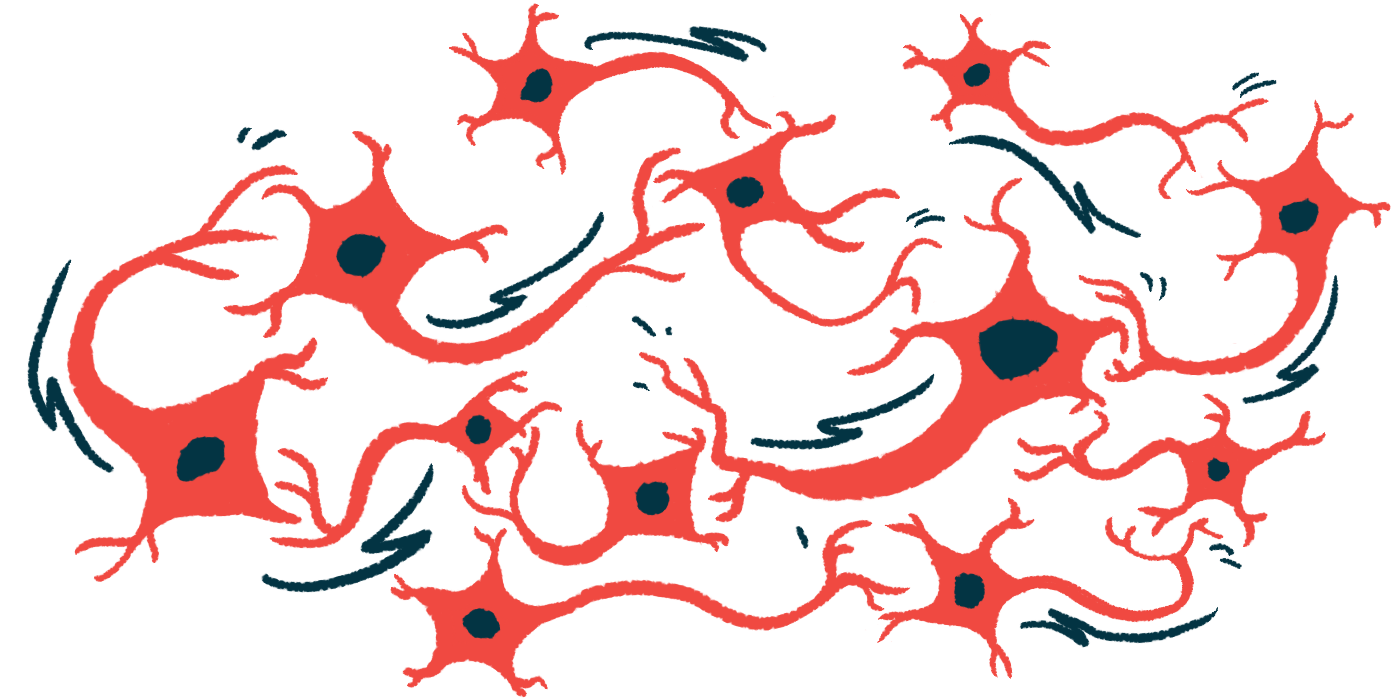Enzymes play opposing roles in Huntington’s disease development
GSK3-beta, ERK1 may be new therapeutic targets, study finds

Two signaling enzymes, GSK3-beta and ERK1, play opposing roles in the development of Huntington’s disease and may represent new therapeutic targets, a study showed.
“We propose that ERK1 may protect neurons in the face of Huntington’s disease, while [GSK3-beta] may exacerbate Huntington’s disease,” Shermali Gunawardena, PhD, the study’s senior author and associate professor of biological sciences at University at Buffalo (UB), said in a university news story. “Therapeutics may one day be able to target these signaling proteins in different ways — inhibiting [GSK3-beta] and boosting ERK1 — to treat this severe and fatal neurological disorder.”
The study, “Opposing roles for GSK3β and ERK1-dependent phosphorylation of huntingtin during neuronal dysfunction and cell death in Huntington’s disease,” was published in Cell Death & Disease.
Huntington’s is caused by a defect in the HTT gene known as the CAG trinucleotide repeat expansion, in which a sequence of three DNA building blocks, C, A, and G, is excessively repeated.
Normally, CAG is repeated 10 to 35 times. People with 40 CAG repeats or more almost always develop Huntington’s, and those with longer stretches develop Huntington’s symptoms at a younger age.
Huntingtin and polyQ
Excessive CAG repeats lead to the production of an abnormal huntingtin (HTT) protein with a longer than usual polyQ, a region derived from CAG repeats that influences protein interactions and cellular signaling. This overall longer HTT protein is prone to form clumps that are believed to contribute to Huntington’s neurodegeneration.
But it’s largely unclear what the normal function of HTT is and how an expanded polyQ affects its function.
Gunawardena and colleagues previously showed that huntingtin is required for the normal movement of tiny vesicles containing certain proteins along nerve fibers (axons). This movement is directly mediated by motor proteins called dyneins and kinesins.
Based on these findings, the team hypothesized that a polyQ expansion in the HTT protein blocks vesicle movement and leads to nerve cell death.
“There’s not much that can be done once cells have died, so our whole research is trying to figure out these key, early processes that lead to cell death and whether that can be prevented,” Gunawardena said.
To test their hypothesis, the scientists isolated and examined HHT-containing vesicle membranes from lab-grown healthy and Huntington’s-derived neurons. In Huntington’s neurons, there was a marked change in the network of kinases associated with the HTT protein on membranes.
“This time, we focused on the signalers that actually regulate this entire complex transport system: a group of proteins called kinases,” said Thomas J. Krzystek, PhD, the study’s first author and now a senior scientist at Abbvie. “Kinases modify HTT and other transport components by attaching molecular tags to them known as phosphate groups.”
Experiments with fruit flies
The observed changes in kinase networks in Huntington’s neurons were linked with increased levels of phosphorylated HTT protein. Two kinases, GSK3-beta and ERK1, were found at higher levels in Huntington’s neurons relative to healthy neurons, and were shown to phosphorylate both normal and mutant HTT.
As in lab-grown patient-derived neurons, neurons from a fruit fly model of Huntington’s showed blocked axons, disrupted transport of certain HTT-dependent proteins, buildup of HTT clumps, and cell death.
Further experiments in the fruit fly model showed that increased GSK3-beta contributed to global axonal transport defects in neurons. Blocking the enzyme rescued these defects, prevented neuronal cell death, and improved motor function in fruit fly larvae.
“Excess active [GSK3-beta] likely causes neuronal cell death through multiple pathways, including those that are triggered by phosphorylation of HTT and/or a cascade of events activated by [disease-causing] HTT-mediated transport defects,” the researchers wrote.
Gunawardena said that while GSK3-beta “typically plays a positive role in neuronal function, it seems it may actually make a bad situation worse when faced with a mutant HTT.”
Conversely, blocking ERK1 activity in the model increased blockages in HTT-related axonal transport and the levels of HTT clumps, triggering nerve cell death and enhancing larval motor deficits.
“The level of ERK1 is clearly important for Huntington’s disease, but whether it’s actually modulating the mutant HTT is unclear,” Krzystek said. “Either way, the signaling from this ERK1 pathway is neuroprotective in the context of Huntington’s disease.”
Consistently, boosting ERK1 levels in Huntington’s neurons rescued HTT-related axonal blockages within larval nerves and HTT aggregates in larval brains.
“So long as it doesn’t affect other processes that ERK1 might be involved in, future treatment could potentially increase a patient’s levels of ERK1 to mitigate their neuronal cell death,” Gunawardena said.
The findings suggest that “while overall ERK likely exerts a neuroprotective role, ERK’s effect on axonal transport is restricted to HTT, in contrast to [GSK3-beta], which has a broader role during axonal transport,” the researchers wrote.
“This work highlights a novel pathway for potential therapeutic interventions that can aid to mitigate early (transport deficits), and terminal (cell death) consequences seen in HD,” they concluded.
The research was supported by the National Institute of Neurological Disorders and Stroke, UB’s funds, and the BrightFocus Foundation.







